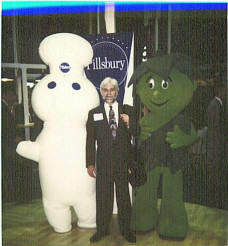If we wanted to be snarky about it, we could use this post to herald the New York Times, on their Op-Ed page, coming out and endorsing cocaine.
For today, the President of Bolivia, Evo Morales Ayma, is on the page, with a informative Op-Ed;
Let Me Chew My Coca LeavesTHIS week in Vienna, a meeting of the United Nations Commission on Narcotic Drugs took place that will help shape international antidrug efforts for the next 10 years. I attended the meeting to reaffirm Bolivia’s commitment to this struggle but also to call for the reversal of a mistake made 48 years ago.
President Ayma cites that many have been "criminals" for the past eight-years, citing the "absurd state of affairs for Bolivians and other Andean peoples", before giving us a bit of a science (and social) lesson;
In 1961, the United Nations Single Convention on Narcotic Drugs placed the coca leaf in the same category with cocaine — thus promoting the false notion that the coca leaf is a narcotic — and ordered that “coca leaf chewing must be abolished within 25 years from the coming into force of this convention.” Bolivia signed the convention in 1976, during the brutal dictatorship of Col. Hugo Banzer, and the 25-year deadline expired in 2001.Many plants have small quantities of various chemical compounds called alkaloids. One common alkaloid is caffeine, which is found in more than 50 varieties of plants, from coffee to cacao, and even in the flowers of orange and lemon trees. Excessive use of caffeine can cause nervousness, elevated pulse, insomnia and other unwanted effects.
Another common alkaloid is nicotine, found in the tobacco plant. Its consumption can lead to addiction, high blood pressure and cancer; smoking causes one in five deaths in the United States. Some alkaloids have important medicinal qualities. Quinine, for example, the first known treatment for malaria, was discovered by the Quechua Indians of Peru in the bark of the cinchona tree.
The coca leaf also has alkaloids; the one that concerns antidrug officials is the cocaine alkaloid, which amounts to less than one-tenth of a percent of the leaf. But as the above examples show, that a plant, leaf or flower contains a minimal amount of alkaloids does not make it a narcotic. To be made into a narcotic, alkaloids must typically be extracted, concentrated and in many cases processed chemically. What is absurd about the 1961 convention is that it considers the coca leaf in its natural, unaltered state to be a narcotic. The paste or the concentrate that is extracted from the coca leaf, commonly known as cocaine, is indeed a narcotic, but the plant itself is not.
Just think of the global, economic boon there could be, if Bolivia, and other Andeans, could mass-market the coca leaf.
Maxwell House could get into the action, with "Good to the last chew"
Winston, also, plastering billboards - "Tastes good, like a coca leaf should"
Certs can make a comeback, go retro and offer "You get two, two, two coca leafs in one"
And, let's not forget Billy Mays, to corner graveyard television, with one of those shouting informercials, touting some new coca leaf product, that will shine your car, stitch your clothes, or wash your entire house while you go to the market.
President Ayma also enlightens us;It helps mitigate the sensation of hunger, offers energy during long days of labor and helps counter altitude sickness. Unlike nicotine or caffeine, it causes no harm to human health nor addiction or altered state, and it is effective in the struggle against obesity, a major problem in many modern societies.
No addiction ... Fights obesity...
With it offering "energy during long days of labor", countries around the world will experience increased productivity, inproving their GDP and export markets.
Sounds like tremendous upside to this little coca leaf.
Start plowing the fields down there, El Presidente Evo!Listen for the voice, the whispering, but booming, voice that says.
"If you grow it, they will come", "Go The Distance" and "Ease our pain"
With a little bit of make-up, maybe Kevin Costner can play you in the movie.
Saturday, March 14, 2009
Chew'em If You Got'em!
Subscribe to:
Post Comments (Atom)









































No comments:
Post a Comment